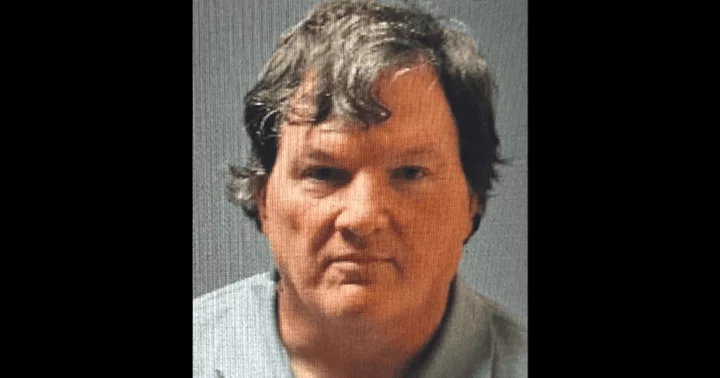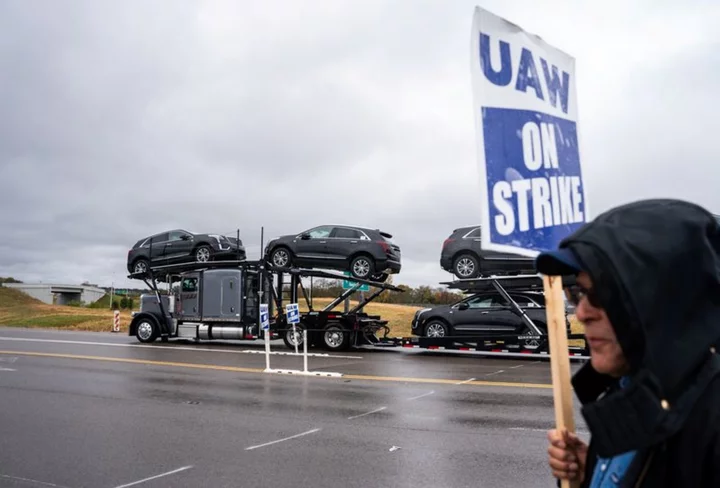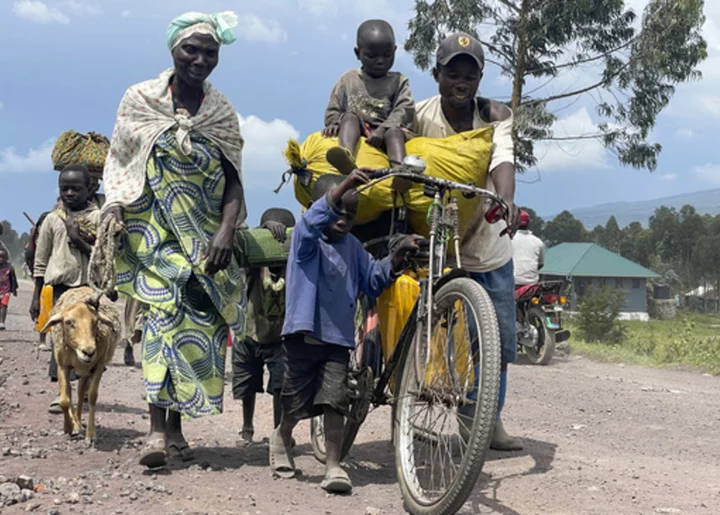LAKE BENTON, Minn. (AP) — With traces of winter’s unusually heavy snow still lingering but a warm sun finally shining, farmers were out dawn to dusk in early May on their tractors, planting corn and soybeans across southwestern Minnesota fields many have owned for generations.
The threat of losing these beloved family farms has become a constant worry, affecting many farmers’ mental health and raising concerns of another uptick in suicides like during the 1980s farm crisis. Much of the stress stems from being dependent on factors largely outside their control – from the increasingly unpredictable weather to growing costs of equipment to global market swings that can wipe out profits.
“You’d be surprised how many people are suffering with depression. Farmers have been a group of people who keep problems to themselves, proud and private,” said Bob Worth, a third-generation crop farmer who with his son works 2,100 acres of rich, black soil near the hamlet of Lake Benton.
“The more you talk about this, the more you realize it can be fixed,” added Worth, who credits his wife with saving his life in the 1980s when he got so depressed that he wouldn’t budge from bed even for the harvest. At least three neighbors and fellow farmers killed themselves, Worth said.
Increasingly aware of agricultural workers’ struggles with mental health, states such as Minnesota and South Dakota, a few miles west of Worth’s farm, are offering suicide prevention training to clergy – who are a crucial, trusted presence in rural America.
In Pipestone, the bigger town down the dirt road from Worth’s farm – with 4,200 residents and a dozen churches – pastors from three Lutheran parishes are taking the four-week suicide prevention program for clergy that Minnesota’s departments of agriculture and health launched this spring.
“I want to learn to help. This could be anybody,” said the Rev. Robert Moeller, recalling his first realization of the scourge of suicide among farmers, when a customer in the feed business he worked at before being ordained killed himself.
Moeller plans to introduce suicide prevention in his 5th through 8th grade catechism class at Our Saviour’s Lutheran Church, and is eager to learn about supporting surviving family members and those who attempted suicide without the stigma and shame often attached to it.
___
EDITOR’S NOTE — This story includes discussion of suicide. The national suicide and crisis lifeline is available by calling or texting 988. There is also an online chat at 988lifeline.org.
___
While rising levels of stress and anxiety are affecting Americans from students to service members, the dynamics are different in the farmland – and so is the strength of the clergy’s role in rural communities, where churches are essential social gathering points.
“Every farm family I know has a relationship with a house of worship,” said Meg Moynihan, a dairy farmer in southern Minnesota who’s been developing the clergy-focused training programs as a senior advisor to the state's agriculture department. “There’s a huge sense of pride."
The evident satisfaction that farmers take in growing crops and raising livestock to feed the country – and beyond, as corn for example is also often sold to China – makes the fear of being unable to keep going a key factor in mental health distress.
“It’s not losing a job or a place. There’s a sense of threat to one’s identity and generational legacy across time,” said Sean Brotherson, professor and extension family science specialist at North Dakota State University. “People treat the farm as a member of the family – and the longest-living member of the family.”
The question, he said, becomes who is going to be the one to decide it's time to let the farm go.
With financing tapped out and feeling they might not be able to pay off more equity in their middle age, Keith and Theresia Gillie started talking about finding jobs away from his homestead in northwestern Minnesota.
“I never realized that in the midst of us quitting farming, that was his identity,” said Gillie, who found her husband of more than 30 years dead on a gravel road. Six years later, she’s still farming wheat, soybean and sunflowers with two neighbors’ help, and has spoken out about Keith’s suicide to get more farmers to open up about their struggles.
Male agricultural workers’ suicide rates are more than two times higher than the national average, according to the Centers for Disease Control and Prevention. There are several issues that play a role, including increased isolation and exacerbated family tensions during the pandemic, the difficulty in rural communities to find in-person mental health counseling or to access broadband for tele-health, as well as the disruptions brought by climate change-driven unpredictable weather patterns, inflation and international trade disputes.
As the average age for farmers inches toward 60, the pressure of passing on a life-defining legacy to new generations is a growing problem, said Monica McConkey, a rural mental health specialist contracted by Minnesota’s agriculture department to provide counseling at no cost.
Driving his tractor and planter, some $750,000 in machinery, Todd Sanderson reflected on how farming has changed in the 42 seasons he’s been planting corn outside Flandreau, South Dakota. An eye to the sky is still foremost – Sanderson decided to get the seeds in the ground the first week of May even though frost still covered the tractor’s windshield in the morning, because later planting means meager yields.
The physical demands have diminished, with technology in his tractor resembling a cockpit more than an agrarian tool, but the uncertainty of making enough to keep the land only grows as the capital investments rise. Sanderson, 61, hopes a nephew will take over from him eventually.
“That’s what’s keeping me up at night, the transition,” he said. “We out here in ag are pretty solitary. If your mind is going in the wrong direction, it’s pretty easy to end up in a bad place. The more I get stressed, the more I get quiet.”
Breaking farmers out of that proud reserve is a big challenge, even for clergy, said the Rev. Alan Blankenfeld. He is the rural ministry liaison for the Evangelical Lutheran Church in America's South Dakota synod and Sanderson’s former pastor in Flandreau, where they started a suicide prevention program that includes Spanish information, since many dairy workers there are immigrants.
“As a pastor, you don’t always have to have something profound to say. It’s just, show up,” said Blankenfeld, who likes to visit farmers and ranchers so they don’t have to come to a church, where their parked vehicle might be recognized by everyone in town and start a rumor mill. “They’ll share on their terms. Our place is not counseling, but we can walk with them.”
Back across the state line in Pipestone, the Rev. Ann Zastrow of First Lutheran Church, who’s taking the Minnesota online prevention course, hopes to build up her confidence to remind those struggling with mental health that “God is still in the picture.”
In many farm families, faith and struggle have long coexisted. First Lutheran’s council president, a retired hog farmer who now raises lambs from 500 ewes outside town, said he still remembers when his mother asked him to take guns out of the house because she was worried about his father.
“Stress and depression and suicide in a farmer is part of it. You just hope that it isn't your part,” Craig Thies said as newborn lambs tottered around him. “I remember the look on (my father’s) face when they sold his cows. Realistically, they’re like your children. But somebody is eating tonight because of you.”
Seeing themselves as part of a crucial creation plan cements farmers’ faith and involvement in church activities, which have historically forged bonds in otherwise isolated homesteads.
That in turn makes the clergy potential lifesavers when given the right tools to help with compassion and without the moral judgment that many still fear about suicide.
“One place we struggle within the church is if we treat suicide as shameful, then they won’t share they’re not okay,” said the Rev. Kelly Ahola, a Lutheran pastor in the Red River Valley, where springtime flooding can wreak havoc on farmland in Minnesota and North Dakota. “We need to say the words. We need to learn to ask, are you thinking of suicide? We need to train the congregation too to know when and how to intervene.”
How to tackle suicide from the pulpit and how to approach it theologically when many consider it a sin was one of the first questions raised in the four-week training course that Minnesota is running. Most of the 80 clergy from across the state who enrolled in it had encountered suicides in their ministry.
For one of them, the Rev. Jillene Gallatin, the call to prevention is excruciatingly personal. It was her pastor who drove her to the hospital when, at 15, she tried to kill herself a year after her mother took her own life. And it was in her church that she met comfort instead of the deafening silence and averted eyes elsewhere in her community.
“People need to tell their stories and struggles that are not so visible. That’s a gift we can bring as church, being a safe spot,” Gallatin said in the sanctuary of Grace Lutheran Church in Waseca, about an hour south of Minneapolis.
Later that spring day, she visited the dairy farm of a church member. Two brothers, along with their wives, children, and father, run the farm that their German immigrant ancestors founded in the 1870s.
There wasn’t a dry eye in the room when the relatives discussed the option of stopping the milking operation, Jason Eldeen recalled.
But they persevered, which makes them among the 1.3% of U.S. workers with direct on-farm employment, according to a podcast he likes to listen to when out in the fields – and to the U.S. Department of Agriculture’s 2023 data.
“How lucky we are that we get to farm,” he said, as some of the cows reached out to lick his and Gallatin’s hands in the spring sunshine.
—-
Associated Press religion coverage receives support through the AP’s collaboration with The Conversation US, with funding from Lilly Endowment Inc. The AP is solely responsible for this content.









